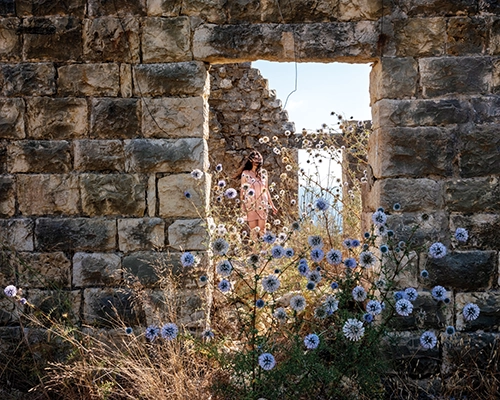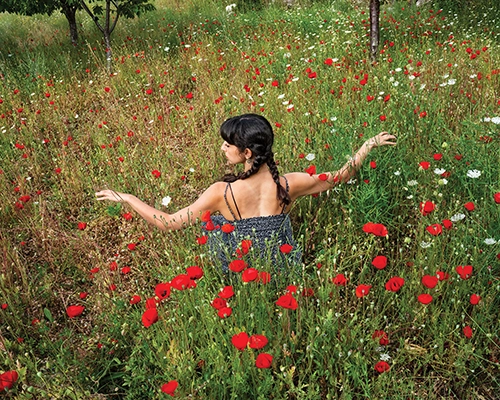The Sidney and Lois Eskenazi Museum of Art is pleased to announce the forthcoming featured exhibition, Rania Matar: Where Do I Go? لوين روح؟, on view in the Rhonda and Anthony Moravec Gallery, March 5–August 2, 2026. In this latest body of work, Where Do I Go? (2020–ongoing), Rania Matar collaborates with the young women of Lebanon to collectively commemorate the present and reimagine the future of a country defined by half a century of conflict and catastrophe.
Of the project, Eskenazi Museum Curator of Contemporary Art Elliot Josephine Leila Reichert shared, “The exhibition is the culmination of a long and fruitful relationship between the Eskenazi Museum of Art and photographer Rania Matar, whose work is represented in the museum’s collection. We are honored to debut her latest and most powerful photographic project and its accompanying catalogue, which itself is a work of art.”
Matar was born and raised in Lebanon and moved to the United States in 1984 to flee the Lebanese Civil War (1975–91) and continue her studies in America. Matar’s cross-cultural experiences help her to navigate the delicate stories of life that inform her photography. Her work explores issues of personal and collective identity through photographs of female adolescence and womanhood.
“Rania Matar’s striking photographs draw the viewer into the scene,” said Mindy N. Besaw, Wilma E. Kelley Director. “The complexity of the carefully composed images and the stories of the women and their surroundings make a lasting impression.”
More than fifty years after the eruption of its Civil War, Lebanon continues to endure long-term instability. Amid the country’s tumult, Matar continues her practice of capturing portraits of young women who persist in uncertain times. Instead of focusing on the devastation associated with her country and the wider region, she trains her lens on young Lebanese women to forefront their creativity, strength, and dignity.
The backdrops for Matar’s portraits, which are chosen in collaboration with each sitter, include the Mediterranean Sea, the craggy peaks of Mount Lebanon, the traditional and modern buildings of Beirut, and the country’s many layers of destruction and abandonment, weaving the women, the land, and the architecture into a tapestry of beauty and anxious promise.
As Matar photographs, her empathic eye sees the women’s hopes, pains, dreams, and dilemmas as they consider what future Lebanon might offer amidst the largest wave of emigration from the country since her own departure. These photographs speak to a universal moment of anxiety in the face of global unrest and political and economic uncertainty. At a time when the status of women is precarious, Matar reveals the resilience of a society as exemplified by the strength and grace of its women.




